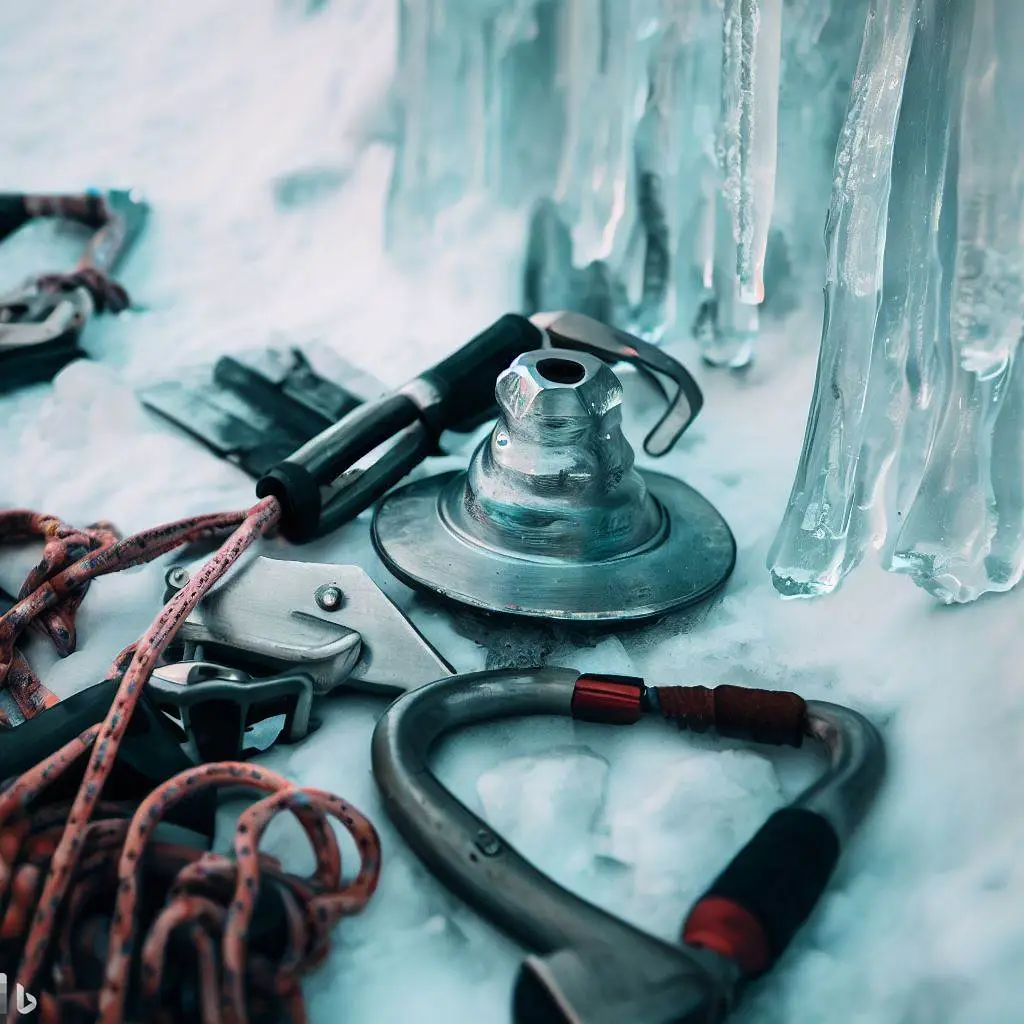Island Peak Climbing Difficulty & How to Tackle It
Welcome to the captivating world of Island Peak, nestled in the mighty Himalayas. This comprehensive guide aims to provide you with valuable insights into the Island Peak climbing difficulty. By equipping yourself with the right knowledge and preparation, you can embark on this thrilling adventure with confidence.
Table of Contents
Importance of Understanding Island Peak Climbing Difficulty
Before setting foot on Island Peak, it is vital to comprehend the challenges that lie ahead. By acknowledging the climbing difficulty, you can adequately prepare yourself physically and mentally, ensuring a safer and more rewarding experience.
Evaluating Altitude and Acclimatization Challenges
Island Peak’s towering altitude poses a significant obstacle for climbers. The diminishing oxygen levels can cause altitude-related illnesses, making proper acclimatization essential. Understanding the signs of altitude sickness and implementing gradual ascent strategies are crucial for a successful climb.
Technical Aspects: Ice Climbing, Glacier Traversing, and Crevasses
The technical nature of Island Peak demands proficiency in essential mountaineering skills. From navigating icy slopes to crossing treacherous glaciers and negotiating crevasses, climbers must be well-versed in ice-climbing techniques, roping skills, and crevasse rescue. Developing these competencies is paramount to overcoming the challenges posed by the terrain.
Weather Conditions and Seasonal Variations
The Himalayas are known for their unpredictable weather patterns, and Island Peak is no exception. Extreme temperatures, high winds, and sudden weather changes can significantly impact the climb. Familiarizing yourself with the seasonal variations and selecting the right time for your expedition is crucial for a safer and more enjoyable experience. Check our “Best time to climb island peak” for more details.
Importance of Understanding the Difficulty Level
Taking the time to thoroughly grasp the difficulty level of Island Peak before attempting the climb is of utmost importance. By doing so, you can adequately prepare yourself physically, mentally, and emotionally, minimizing the risks associated with such an undertaking. Understanding the difficulty level allows you to set realistic expectations, make informed decisions, and ensure a higher chance of success.
Understanding Island Peak
Description of Island Peak’s location and geographical features
Nestled in the heart of the Everest region, Island Peak (Imja Tse) stands as a majestic and iconic summit in the Himalayas. Located in the Solu Khumbu region of Nepal, Island Peak is surrounded by towering peaks, including the mighty Lhotse, Nuptse, and Ama Dablam. Its strategic position amidst these grand mountains offers climbers breathtaking panoramic views and a sense of awe-inspiring beauty.
The peak gets its unique name from its appearance when viewed from the Dingboche village, resembling an island rising from a sea of glaciers. This distinct feature further adds to the allure of Island Peak, making it a highly sought-after destination for adventurers and mountaineers alike.
Historical Context and cultural significance of Island Peak
In the early 1950s, a British expedition team led by Eric Shipton first explored the area and successfully climbed Island Peak. This accomplishment marked a significant milestone in Himalayan mountaineering history and paved the way for future expeditions in the region.
The Sherpa people, renowned for their mountaineering prowess, have been an integral part of the Everest region’s cultural fabric. Island Peak, along with other peaks in the vicinity, holds cultural significance for the Sherpas, who regard the mountains as sacred. Sherpas’ rich traditions, spiritual beliefs, and close connection to the mountains contribute to the cultural significance of Island Peak and the surrounding region.
Overview of the climbing route and popular base camps
The most common approach to the peak begins with a scenic flight from Kathmandu to Lukla, followed by a trek through picturesque Sherpa villages and lush valleys. As climbers venture deeper into the Everest region, they pass through renowned landmarks such as Namche Bazaar and Tengboche, immersing themselves in the local culture and traditions.
The climbing route to Island Peak typically starts from Chhukung, a popular base camp situated at an altitude of around 4,730 meters (15,518 feet). From Chhukung, climbers ascend through the rugged terrain, traversing glacial moraines and rocky slopes. The journey involves a thrilling combination of technical ice climbing, rope work, and glacier crossings, testing climbers’ skills and determination.
Another popular base camp for Island Peak is the Everest Base Camp (EBC), situated at 5,364 meters (17,598 feet). Many climbers opt to combine the Island Peak ascent with the iconic Everest Base Camp trek, allowing them to witness the grandeur of Mount Everest up close while acclimatizing for the Island Peak climb.
Both Chhukung and Everest Base Camp serve as vital acclimatization points and hubs for climbers. They provide essential facilities such as teahouses, accommodations, and communication services, ensuring that climbers can rest, refuel, and gather their strength before continuing their ascent.
By choosing either base camp, climbers can embark on an exhilarating adventure, forging their path toward the summit of Island Peak and immersing themselves in the rich cultural heritage of the Everest region.
Evaluating the Difficulty
Factors contributing to the difficulty level of Island Peak climb
1. Altitude and acclimatization challenges
Climbing Island Peak entails navigating through high altitudes, with the summit reaching an impressive 6,189 meters (20,305 feet) above sea level. The thin air at such heights presents a significant challenge to climbers, as it leads to decreased oxygen levels and increased physical exertion.

Adequate acclimatization is crucial to allow the body to adjust gradually to the altitude and mitigate the risk of altitude-related illnesses, such as acute mountain sickness (AMS) or high-altitude pulmonary edema (HAPE). Climbers must carefully plan their ascent, allowing ample time for acclimatization and proper rest.
2. Technical aspects: ice climbing, glacier traversing, and crevasses
Island Peak demands technical skills and experience in various mountaineering techniques. The ascent involves sections of ice climbing, where climbers use crampons, ice axes, and ropes to navigate steep icy slopes. Glacier traversing is also required, as climbers negotiate their way through crevassed areas on the Imja Glacier.
These technical aspects require climbers to be proficient in rope management, self-arrest techniques, and glacier travel to ensure safety and progress on the route.
3. Weather conditions and seasonal variations
The weather in the Everest region can be unpredictable and harsh, adding another layer of difficulty to climbing Island Peak. Climbers may encounter strong winds, snowfall, and sub-zero temperatures, even during the climbing season.
It is essential to stay updated on weather forecasts and plan the ascent accordingly. Seasonal variations also play a significant role, with the climbing season typically spanning from April to May and October to November, when the weather tends to be more stable. Climbers must be prepared for sudden weather changes and exercise caution when faced with adverse conditions.
Comparison with other popular peaks in the Everest region
Island Peak, with its unique challenges, stands out among the popular peaks in the Everest region. Let’s briefly compare it with two other renowned summits:
Everest (8,848 meters / 29,029 feet):
- Island Peak is significantly lower in altitude compared to Mount Everest, the highest peak in the world.
- The ascent of Everest requires extensive mountaineering experience, months of preparation, and a considerable financial investment. In contrast, Island Peak offers a challenging but more accessible option for climbers with intermediate mountaineering skills.
Ama Dablam (6,812 meters / 22,349 feet):
- Island Peak and Ama Dablam share similar altitudes, but Ama Dablam is renowned for its technical difficulty and aesthetic appeal.
- Ama Dablam demands advanced mountaineering skills, including rock climbing and exposure to extreme heights, while Island Peak offers a more feasible option for climbers seeking a challenging but slightly less technical climb.
Each of these peaks presents its own set of difficulties and rewards. Island Peak, with its balance of technical challenges and attainable altitude, serves as an enticing choice for those seeking a memorable Himalayan adventure.
Physical Fitness and Training
Importance of physical fitness for Island Peak climb

Physical fitness plays a crucial role in the successful ascent of Island Peak. Being in good physical condition not only enhances your performance but also ensures your safety and overall enjoyment of the climb. Here’s why physical fitness is essential:
- Endurance: Island Peak climbing involves long hours of trekking, steep ascents, and physically demanding sections. Good endurance allows you to sustain a steady pace, overcome fatigue, and cope with the challenges posed by high altitudes.
- Strength: Climbing requires strength, particularly in your lower body, core, and upper body. Strong leg muscles aid in uphill climbs and stability on uneven terrain. Upper body strength is essential for maneuvers like ice climbing and rope management.
- Flexibility: Flexibility enhances your agility and helps prevent injuries. It allows you to navigate through narrow crevasses and perform dynamic movements required during climbing.
- Quick Recovery: Climbing at high altitudes places increased stress on your body. Being physically fit improves your ability to recover quickly, reducing the risk of fatigue and muscle soreness.
Check out “How to train for Peak Climbing: Tips from Pro” for more specific details.
Recommended training regimen and preparation
To prepare for the Island Peak climb, it’s important to follow a well-rounded training regimen. Here’s a recommended training plan:
Cardiovascular Training: Engage in activities such as running, cycling, or hiking to improve your cardiovascular endurance. Aim for at least three to four sessions per week, gradually increasing the duration and intensity over time.
Strength Training: Focus on building strength in your lower body, core, and upper body. Incorporate exercises like squats, lunges, step-ups, planks, and push-ups into your routine. Aim for two to three strength training sessions per week, gradually increasing the weights and repetitions.
Flexibility Training: Include stretching exercises, yoga, or Pilates to improve flexibility and enhance your range of motion. Stretch major muscle groups regularly, especially after workouts.
Altitude Training: If possible, consider incorporating altitude training into your preparation. This could involve simulated altitude training using altitude training masks or training at high-altitude locations.
Necessary Skills and Experience
Mountaineering experience requirements for Island Peak
Before attempting to climb Island Peak, it is important to have prior mountaineering experience. This ensures that climbers possess the necessary skills and knowledge to tackle the challenges that come with climbing a peak of this nature.
While Island Peak is considered a suitable objective for novice climbers, some previous mountaineering experience is highly recommended. This experience helps in building a solid foundation of skills, as well as mental and physical preparedness for the climb.
Technical skills: ice climbing, roping techniques, and equipment handling
Island Peak involves technical aspects such as ice climbing, roping techniques, and proper handling of mountaineering equipment. Ice climbing skills are essential as climbers encounter sections of steep ice and snow on the ascent. Proficiency in using ice axes, crampons, and ropes is crucial for safe navigation through these sections. Roping techniques are employed to ensure the security of the climbing party and to mitigate risks associated with crevasses and steep slopes.
Basic knowledge of glacier travel and navigation
Glacier travel is an integral part of the Island Peak climb. A basic understanding of glacier travel and navigation is necessary to safely negotiate the glaciated terrain. This includes knowledge of route finding, recognizing potential hazards, and understanding glacier features such as crevasses and seracs. Climbers should be familiar with techniques like roped travel, self-arrest, and self-rescue in case of emergencies.
Equipment and Gear
Essential equipment list for Island Peak climb

When preparing for an Island Peak climb, it is crucial to have the right equipment to ensure safety, comfort, and success. Here is a brief overview of the essential gear required for the climb:
- Mountaineering Boots: Sturdy, waterproof boots with good ankle support are necessary for navigating rugged terrain and icy slopes. It is important to break in the boots before the climb to avoid discomfort or blisters.
- Crampons: These traction devices attach to your boots and provide grip on icy surfaces. Ensure they fit securely and are compatible with your boots.
- Ice Axe: An ice axe is essential for stability and balance on steep icy slopes. It is used for self-arrest and to provide additional support while climbing.
- Harness: A climbing harness is necessary for safety during roped sections. It should be adjustable, comfortable, and fit properly.
- Helmet: Protect your head from falling ice and rocks with a durable climbing helmet. It is a crucial safety item that should not be overlooked.
- Ropes and Carabiners: Ropes and carabiners are used for roped sections and to secure yourself to the mountain. Make sure to have the appropriate length and number of ropes, along with enough carabiners for attaching yourself to the rope.
- Clothing: Layered clothing is important to regulate body temperature in changing weather conditions. Include base layers, insulating layers, and a waterproof and breathable shell jacket and pants. Don’t forget gloves, hats, and warm socks.
- Backpack: A sturdy and comfortable backpack with a capacity of around 40-50 liters is recommended to carry your gear and supplies.
- Sleeping Bag: Choose a sleeping bag suitable for cold temperatures encountered at higher altitudes. Ensure it is lightweight and provides sufficient insulation.
- Headlamp: A headlamp is essential for early morning starts or navigating in the dark. Carry extra batteries.
- Sunglasses and Sunscreen: Protect your eyes and skin from the intense mountain sun. Choose sunglasses that offer UV protection and carry a high SPF sunscreen.
- Navigation Tools: Carry a map, compass, and GPS device to navigate the route effectively. Familiarize yourself with the route beforehand.
This is just a general overview of the essential gear required for Island Peak climbing. For a more detailed and comprehensive list, you can refer to our article on “Essential Gear for Island Peak Climbing.” Make sure to prioritize safety and quality when selecting your equipment.
Choosing the Right Guide and Expedition
Importance of selecting a reputable guide or expedition company
When embarking on an Island Peak climb, selecting a reputable guide or expedition company is of utmost importance. A reliable and experienced guide can greatly enhance your climbing experience and ensure your safety throughout the journey. Here are a few reasons why choosing the right guide or company is crucial:
- Safety: Professional guides prioritize safety above all else. They have extensive knowledge of the mountain, weather conditions, and emergency protocols. They are trained to assess risks and make informed decisions to keep climbers out of harm’s way.
- Expertise: Reputable guides possess extensive mountaineering experience and technical skills required for climbing Island Peak. They are well-versed in ice climbing, roping techniques, and glacier navigation. Their expertise ensures a smooth and efficient climb.
- Local Knowledge: Guides with local expertise have an intimate understanding of the region, including its geography, culture, and weather patterns. They can provide valuable insights and ensure a more authentic and immersive experience.
- Logistics and Support: A professional expedition company like “Nepal Peak Adventure” can handle the logistical aspects of the climb, including permits, accommodation, transportation, and equipment. They have established connections with local service providers, making the entire process hassle-free for climbers.
Factors to consider when choosing a guide
When selecting a guide or expedition company for your Island Peak climb, consider the following factors:
- Experience: Look for guides with a proven track record of successful climbs and satisfied clients. Check their qualifications, certifications, and years of experience in the field.
- Reputation: Read reviews and testimonials from previous climbers to gauge the reputation and reliability of the guide or company. Look for positive feedback regarding safety, professionalism, and overall experience.
- Services and Packages: Consider the range of services offered by the guide or company. Do they provide comprehensive packages that include transportation, accommodation, meals, and equipment rental? Ensure their offerings align with your needs and preferences.
- Guides’ Expertise: Inquire about the qualifications and experience of the guides themselves. Are they trained in mountaineering and wilderness first aid? Do they have previous experience climbing Island Peak specifically?
- Client-to-Guide Ratio: Find out the maximum number of climbers assigned to each guide. Smaller group sizes often result in more personalized attention and a better overall experience.
Safety Considerations
Precautions for managing altitude sickness and other health risks
Altitude sickness is a significant concern when climbing Island Peak. It is essential to take necessary precautions to mitigate the risk and ensure the well-being of climbers. Here are some measures to consider:
- Acclimatization: Adequate acclimatization is crucial to prevent altitude sickness. Plan your itinerary to include gradual ascents and rest days at higher altitudes to allow your body to adjust to the reduced oxygen levels.
- Hydration and Nutrition: Stay hydrated by drinking plenty of fluids throughout the climb. Proper nutrition, including a balanced diet with carbohydrates and high-calorie foods, helps maintain energy levels and supports acclimatization.
- Medication: Consult with a healthcare professional experienced in high-altitude medicine before your climb. They may recommend medications like acetazolamide (Diamox) to assist with acclimatization. Carry a basic first-aid kit, including medications for common ailments like headaches and upset stomachs.
- Recognizing Symptoms: Educate yourself about the symptoms of altitude sickness, such as headache, dizziness, nausea, fatigue, and shortness of breath. Be vigilant in monitoring your health and communicate any concerns to your guide or team members.
Emergency protocols and communication systems
When climbing Island Peak, being prepared for emergencies is crucial. Here are some considerations regarding emergency protocols and communication systems:
- Communication Devices: Ensure your guide or expedition company has reliable communication devices such as satellite phones or radios to stay connected with base camps and emergency services.
- Emergency Evacuation Plan: Understand the evacuation procedures in case of severe altitude sickness or other emergencies. Know the nearest medical facilities and helicopter rescue services available in the area.
- Team Dynamics: Maintain good communication within your climbing team. Establish emergency protocols and designate roles and responsibilities in case of emergencies. Regularly check on each other’s well-being and address any concerns promptly.
- Weather Monitoring: Stay informed about weather conditions and be prepared to adjust your plans accordingly. Unfavorable weather, such as storms or strong winds, can significantly impact climbing safety.
Importance of travel insurance coverage
Obtaining comprehensive travel insurance is highly recommended when undertaking an Island Peak climb. Here’s why travel insurance is important:
- Medical Coverage: Travel insurance provides coverage for medical expenses in case of illness or injury during the climb. This includes emergency medical evacuation, hospitalization, and treatment costs.
- Trip Cancellation or Interruption: Travel insurance safeguards your financial investment by offering compensation for trip cancellation or interruption due to unforeseen circumstances such as personal emergencies or severe weather conditions.
- Equipment Loss or Damage: Travel insurance may provide coverage for lost, stolen, or damaged equipment, including climbing gear. This ensures that you can replace essential items without incurring significant expenses.
- Liability Coverage: Travel insurance may include liability coverage, protecting you in case of accidental damage to property or injury to others during the climb.
Ensure that your travel insurance policy covers mountaineering activities and has adequate coverage for high-altitude climbs. Review the policy terms and conditions to understand the extent of coverage and any exclusions.
Conclusion
Encouragement for climbers to tackle the Island Peak Challenge
Embarking on the Island Peak climbing adventure is a remarkable feat that tests your physical and mental endurance. Despite the challenges that come with it, conquering this majestic peak in the heart of the Himalayas can be an immensely rewarding experience.
The sense of accomplishment and the breathtaking views from the summit make it all worthwhile. If you have a passion for mountaineering and seek an extraordinary challenge, Island Peak awaits you.
Final thoughts and advice for aspiring climbers
As we conclude this article on Island Peak climbing difficulty, we would like to leave you with some final thoughts and advice:
Believe in Yourself: Island Peak may seem daunting, but with proper preparation, determination, and the right mindset, you can overcome any obstacle. Trust in your abilities and stay focused on your goal.
Train and Prepare: Physical fitness plays a crucial role in your success on Island Peak. Follow a recommended training regimen, improve your cardiovascular endurance, build strength, and enhance your flexibility. Remember to consult a professional trainer or guide for personalized guidance.
Seek Professional Guidance: When undertaking a challenging climb like Island Peak, it is essential to choose a reputable guide or expedition company. Nepal Peak Adventure, our highly recommended company, specializes in organizing Island Peak climbing expeditions. With their professionalism and experienced guides, they ensure a safe and memorable journey for climbers.
Respect the Mountain and Nature: As you embark on your Island Peak climb, remember to respect the mountain and its surroundings. Practice Leave No Trace principles, minimize your environmental impact, and appreciate the beauty and fragility of the Himalayan ecosystem.
Enjoy the Journey: Island Peak climbing is not just about reaching the summit; it’s about the entire journey. Embrace the breathtaking landscapes, immerse yourself in the local culture, and forge lifelong memories with your fellow climbers.
By embracing the challenge, respecting the mountain, and seeking the right guidance, you can conquer the Island Peak and create an unforgettable adventure. Nepal Peak Adventure stands ready to assist you in realizing your dream. Take the first step, embark on this extraordinary journey, and witness the remarkable beauty of Island Peak for yourself.
Remember, Island Peak climbing difficulty should not deter you but inspire you to push your limits, discover your true potential, and experience the thrill of standing on the summit of this Himalayan marvel. Seize the opportunity, prepare diligently, and let Nepal Peak Adventure be your trusted partner in making your Island Peak climb a resounding success.



